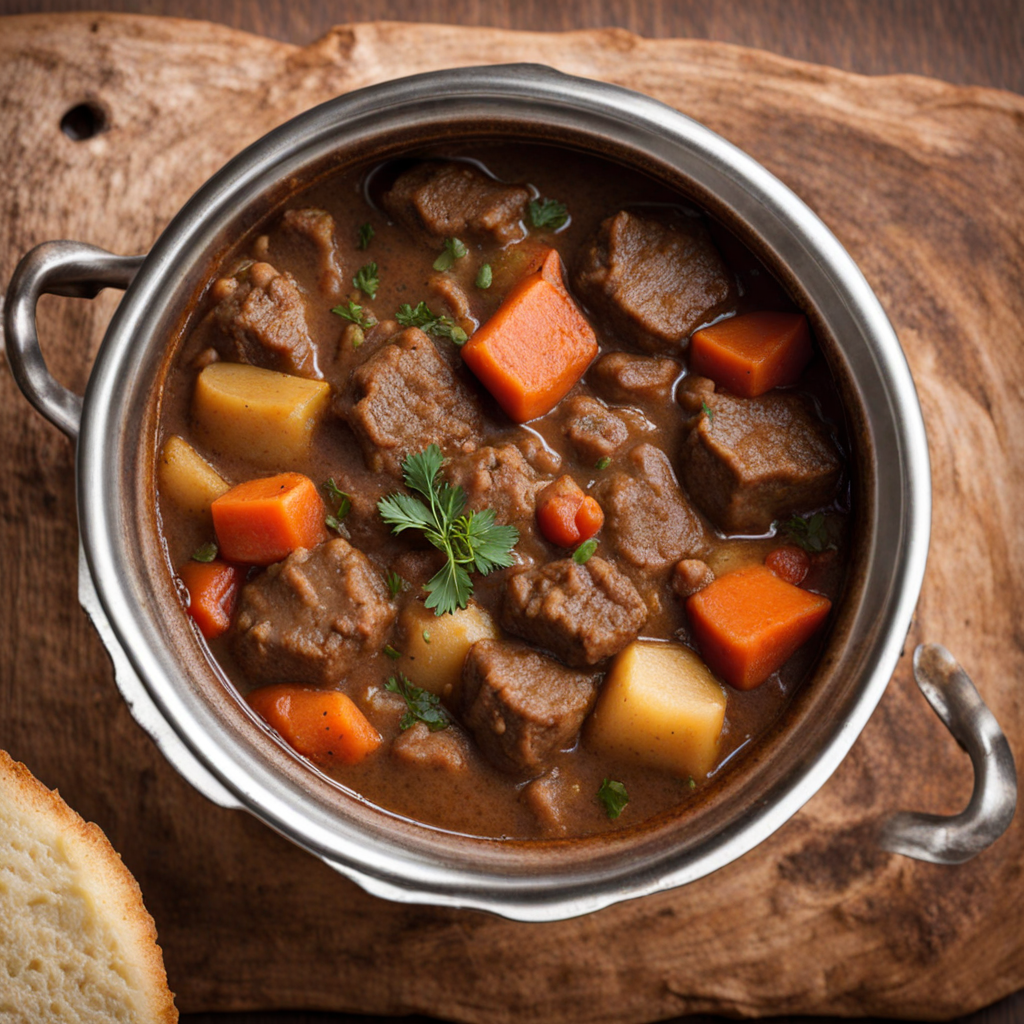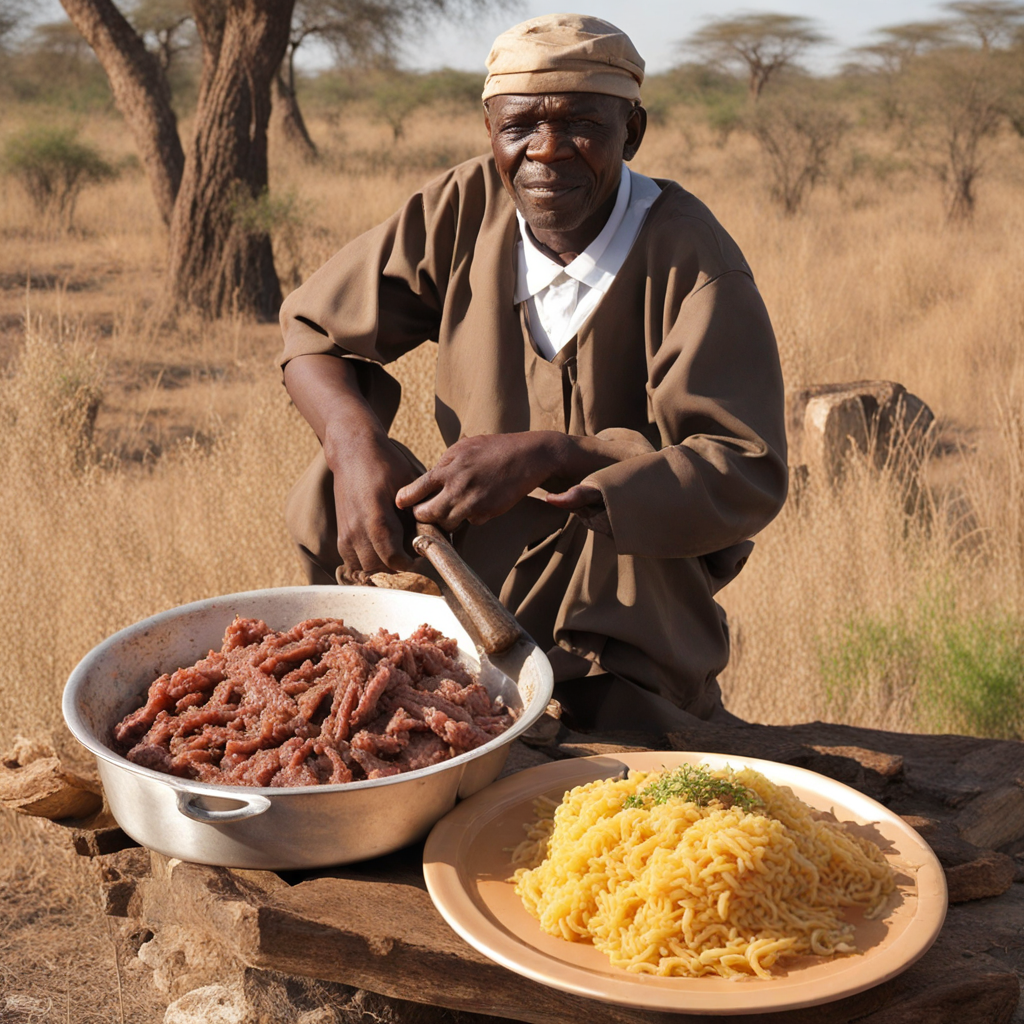Pap
Pap, a staple food in Botswana, is a comforting dish made primarily from ground maize (corn) or sorghum. This versatile dish has a smooth, thick, and porridge-like consistency that can be served in various ways. Traditionally, pap is cooked by boiling maize meal with water until it reaches a dense, dough-like texture. Its neutral flavor profile makes it an excellent accompaniment to a wide array of dishes, including meat stews and vegetable dishes, allowing it to absorb the rich flavors of the sauces it is served with. In Botswana, pap is often enjoyed as a part of communal meals, where it serves as a filling base that complements the more robust flavors of local proteins such as beef, chicken, or fish. The dish is not only cherished for its taste but also for its cultural significance, as it brings families and communities together around the dining table. Some enjoy pap with a drizzle of tomato or onion sauce, while others may add a hint of spice or relish for added flavor, showcasing the adaptability of this beloved staple. Pap also holds a special place in Botswana's culinary traditions, where it is sometimes flavored with ingredients like butter or milk to create a creamier texture. As you explore this delightful dish, you'll discover its ability to balance heartiness with simplicity, making it a satisfying choice for any meal. Its subtle sweetness and dense mouthfeel make it an inviting canvas for various toppings and sauces, inviting you to experiment and personalize your dining experience.
How It Became This Dish
The Engaging History of Bogobe: A Culinary Heritage of Botswana #### Origins of Bogobe Bogobe, a staple dish in Botswana, is a traditional porridge made primarily from maize meal or sorghum, often enjoyed in various forms across the country. The term “bogobe” itself is derived from the Tswana language, where "bo" refers to "food" or "meal." It is a dish that resonates with the agricultural practices of the Batswana people, who have been cultivating maize, sorghum, and millet for centuries. The origins of bogobe can be traced back to the early Bantu-speaking communities that migrated to southern Africa, bringing with them agricultural techniques and culinary traditions that would lay the foundation for modern Botswana cuisine. The indigenous people of the region, including the San and Khoi groups, relied on wild grains and foraged foods prior to the arrival of Bantu farmers. With the introduction of settled agriculture, maize and sorghum became integral to the diet, offering a reliable source of sustenance. Early forms of bogobe were likely simple porridge made from ground grains mixed with water and cooked over an open fire, a practice that continues in many households today. #### Cultural Significance Bogobe is far more than just a meal; it holds profound cultural significance for the Batswana people. It represents nourishment, community, and tradition. Traditionally, bogobe is often consumed during significant ceremonies, family gatherings, and communal events. It is not uncommon for families and communities to come together to prepare this dish, fostering a sense of unity and belonging. In Botswana's rural settings, bogobe is typically served with various accompaniments that enhance its flavor and nutritional value. These may include meat, vegetables, and sauces, making it a versatile dish capable of catering to diverse palates. The communal aspect of sharing bogobe is emblematic of the Batswana’s values, where food is often seen as a means to strengthen bonds between family and friends. Moreover, bogobe is tied to the identity of the Batswana people. It reflects their agricultural heritage and adaptability in using locally available resources. As a dish that transcends social classes, bogobe is enjoyed by both the rich and the poor, making it a cultural equalizer. This aspect is particularly important in a country where cultural heritage and identity play a critical role in the social fabric. #### Development Over Time The evolution of bogobe mirrors broader changes in Botswana's society and economy. During the colonial period, Botswana faced significant challenges, including the imposition of foreign agricultural practices and the disruption of traditional farming systems. Despite these challenges, the resilience of the Batswana people allowed them to maintain their culinary traditions, including the making of bogobe. In the post-colonial era, the government of Botswana recognized the importance of food security and the need to preserve traditional agricultural practices. Initiatives to promote the cultivation of local grains have helped revitalize the production of sorghum and millet, which are often used in making bogobe. This resurgence has not only contributed to food security but has also rekindled interest in traditional cooking methods. Additionally, the globalization of food culture has introduced new culinary influences, resulting in a fusion of flavors and cooking techniques. Modern adaptations of bogobe can be seen in urban areas, where chefs and home cooks experiment with ingredients like spices, herbs, and international flavors to create innovative versions of this classic dish. This blending of tradition and modernity speaks to the dynamic nature of Botswana’s culinary landscape and reflects a global trend of reinterpreting traditional foods. #### The Modern-Day Context Today, bogobe continues to be a beloved dish in Botswana, representing the intersection of tradition and contemporary life. In urban centers like Gaborone, bogobe is often found in restaurants and street food stalls, appealing to both locals and tourists seeking an authentic taste of Botswana. The dish is frequently featured at cultural festivals and events, showcasing its enduring relevance in the nation’s culinary identity. Moreover, the rise of food tourism in Botswana has brought renewed attention to traditional dishes like bogobe. Visitors to the country are increasingly seeking immersive culinary experiences that allow them to connect with local cultures. Cooking classes often include lessons on making bogobe, providing an opportunity for both locals and tourists to engage with Botswana’s rich culinary heritage. In recent years, there has been a growing movement to promote the nutritional benefits of traditional foods. Nutritionists and health advocates have highlighted bogobe’s role in providing essential carbohydrates, fiber, and micronutrients, positioning it as a healthier alternative to processed foods. This has led to a revival of interest in traditional grains, with many people opting for organic and locally sourced ingredients. #### Conclusion The history of bogobe is a testament to the resilience and adaptability of the Batswana people. From its humble beginnings as a simple porridge to its current status as a symbol of cultural identity and community, bogobe encapsulates the essence of Botswana’s culinary heritage. As it continues to evolve in response to modern culinary trends and global influences, bogobe remains a cherished dish—one that connects generations, sustains the body, and nourishes the soul. In a rapidly changing world, the enduring legacy of bogobe serves as a reminder of the importance of tradition, community, and the rich tapestry of flavors that define Botswana’s culinary landscape.
You may like
Discover local flavors from Botswana







